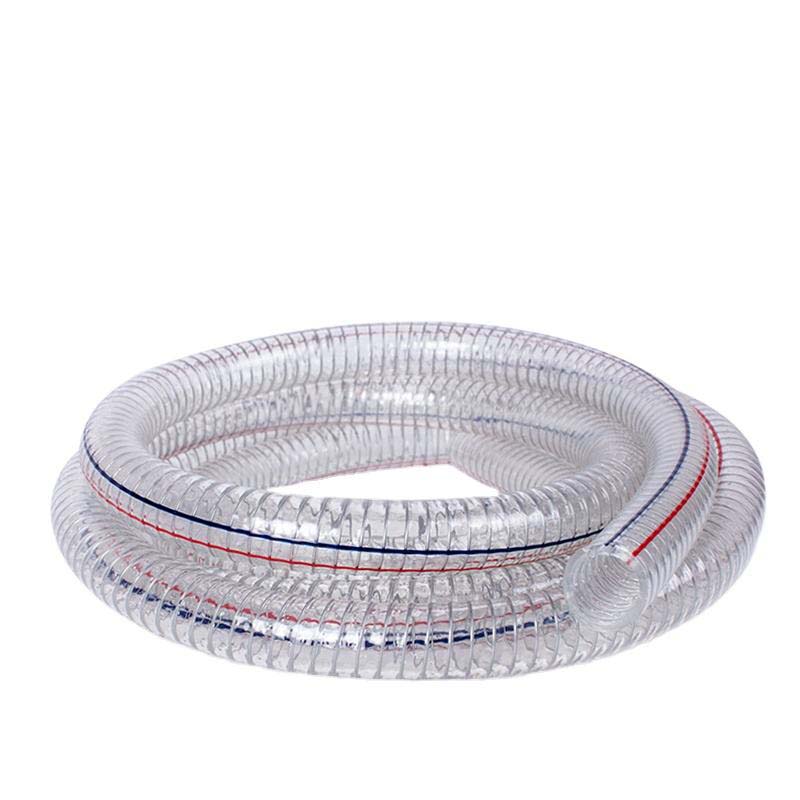Hose Transfer Systems for Efficient Liquid Handling and Transportation Solutions
The Importance of Transfer Hose in Modern Industries
Transfer hoses are an essential component in various industries, playing a pivotal role in the efficient and safe movement of fluids and gases. These flexible tubes are designed to transport a wide range of substances, including water, oil, chemicals, and even food products. As technology advances and industries evolve, the importance of high-quality transfer hoses cannot be overstated.
Understanding Transfer Hoses
A transfer hose is typically made from rubber, PVC, or other synthetic materials, depending on the intended application. These hoses are engineered to withstand varying pressures, temperatures, and chemical exposures while ensuring a secure and leak-proof conveyance of materials. The versatility of transfer hoses makes them indispensable across multiple sectors including agriculture, construction, chemical processing, and food and beverage manufacturing.
Applications of Transfer Hoses
1. Agriculture In agriculture, transfer hoses are used to move irrigation water, fertilizers, and pesticides. Their ability to handle harsh chemicals while remaining resistant to wear and tear means farmers can operate efficiently without worrying about hose failure mid-application.
2. Construction The construction industry frequently uses transfer hoses to transport water, concrete, and other materials needed on-site. The flexible nature of these hoses allows for easy routing around obstacles and in tight spaces, ensuring that construction projects remain on schedule.
3. Chemical Processing In chemical plants, transfer hoses are vital for moving various hazardous materials. These hoses must be crafted to meet stringent safety regulations to prevent leaks and spills that could pose threats to workers and the environment.
4. Food and Beverage Transfer hoses designed for food and beverage applications must adhere to strict sanitary standards. These hoses are made from materials that do not leach toxins and are easy to clean, ensuring that the products transported maintain their quality and safety.
transfer hose

Choosing the Right Transfer Hose
Selecting the appropriate transfer hose involves considering several factors, including the type of substance being transported, the temperature and pressure conditions, and regulatory compliance. For instance, a hose designed to transport corrosive chemicals must be made from materials that resist degradation, while a hose used in food applications must meet FDA regulations to ensure safety.
Another critical factor is the hose's diameter and length. These specifications directly affect flow rates and the efficiency of the transfer process. A hose that is too narrow may restrict flow, while one that is too wide may lead to airflow issues and decreased pressure.
Maintenance and Safety
Proper maintenance of transfer hoses is crucial to ensure longevity and safe operation. Regular inspection for wear, leaks, and kinks can prevent costly downtime and hazardous spills. Additionally, it is essential to follow the manufacturer's guidelines for cleaning and storage to prolong the hose's life.
Moreover, operators should be trained in the proper handling and usage of transfer hoses to mitigate risks associated with their applications. Understanding the limitations and appropriate use-case scenarios can significantly enhance workplace safety.
Conclusion
In conclusion, transfer hoses serve as vital conduits in today’s fast-paced and demanding industries. Their ability to efficiently transport a range of materials while adhering to safety and regulatory standards makes them indispensable. As industries continue to grow and evolve, the development of specialized transfer hoses tailored to meet specific needs will undoubtedly play a significant role in enhancing operational efficiency and ensuring safety. Investing in high-quality transfer hoses and understanding their proper use is not just an operational necessity; it is a critical element in safeguarding health, safety, and productivity in various industrial applications.
-
Unrivaled Performance and Applications of PU Pneumatic Hoses and TubesNewsJun.11,2025
-
The Transparent World of Industrial Tubing and Hosing SolutionsNewsJun.11,2025
-
The Intricate World of Pneumatic Conduits: Tubes and HosesNewsJun.11,2025
-
The Dynamic Landscape of Pneumatic Conduits: Unraveling Key ComponentsNewsJun.11,2025
-
The Diverse Applications and Significance of Transparent PVC TubingNewsJun.11,2025
-
High - Pressure Pneumatic Tubing and Systems: An In - Depth LookNewsJun.11,2025














